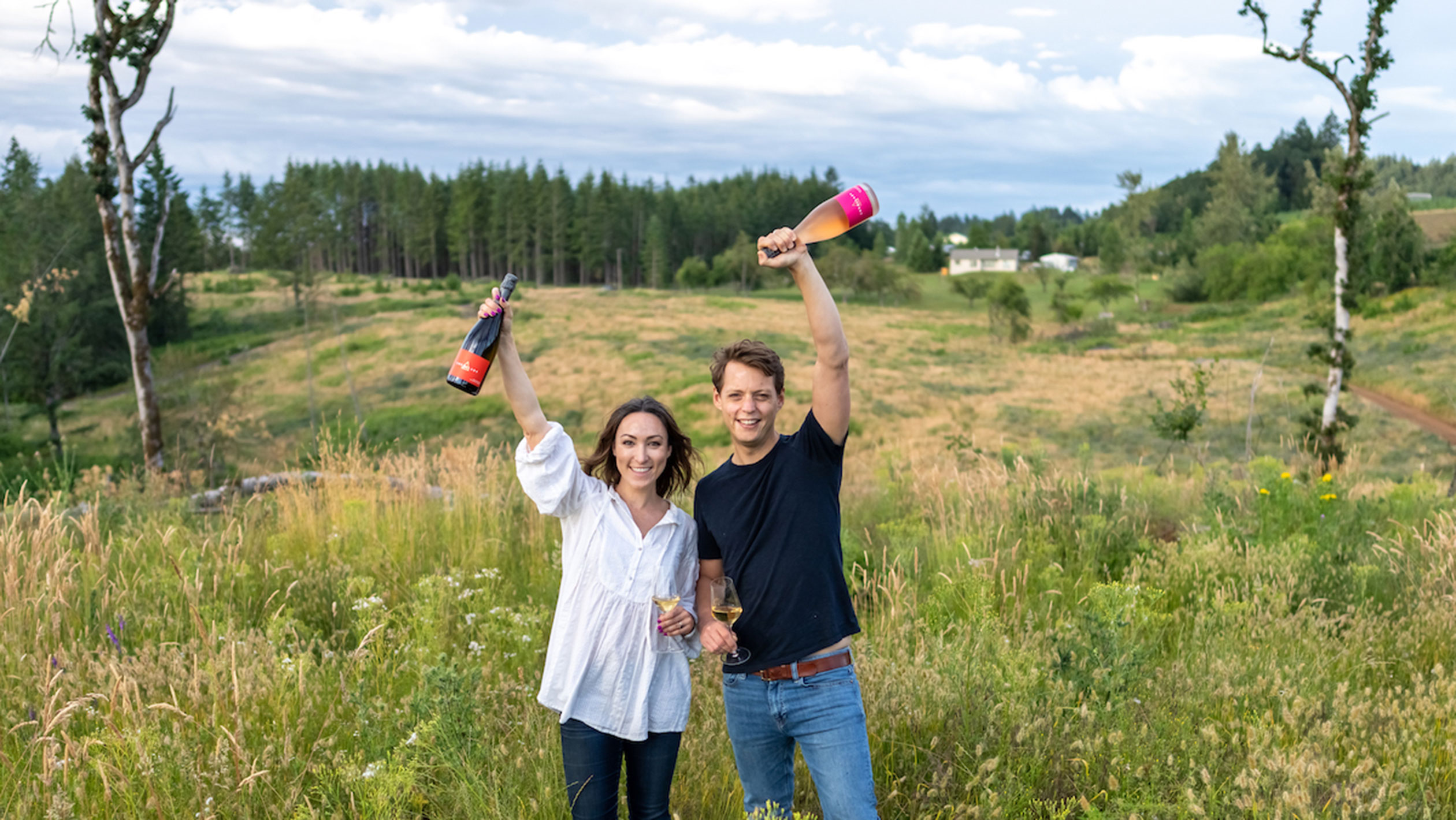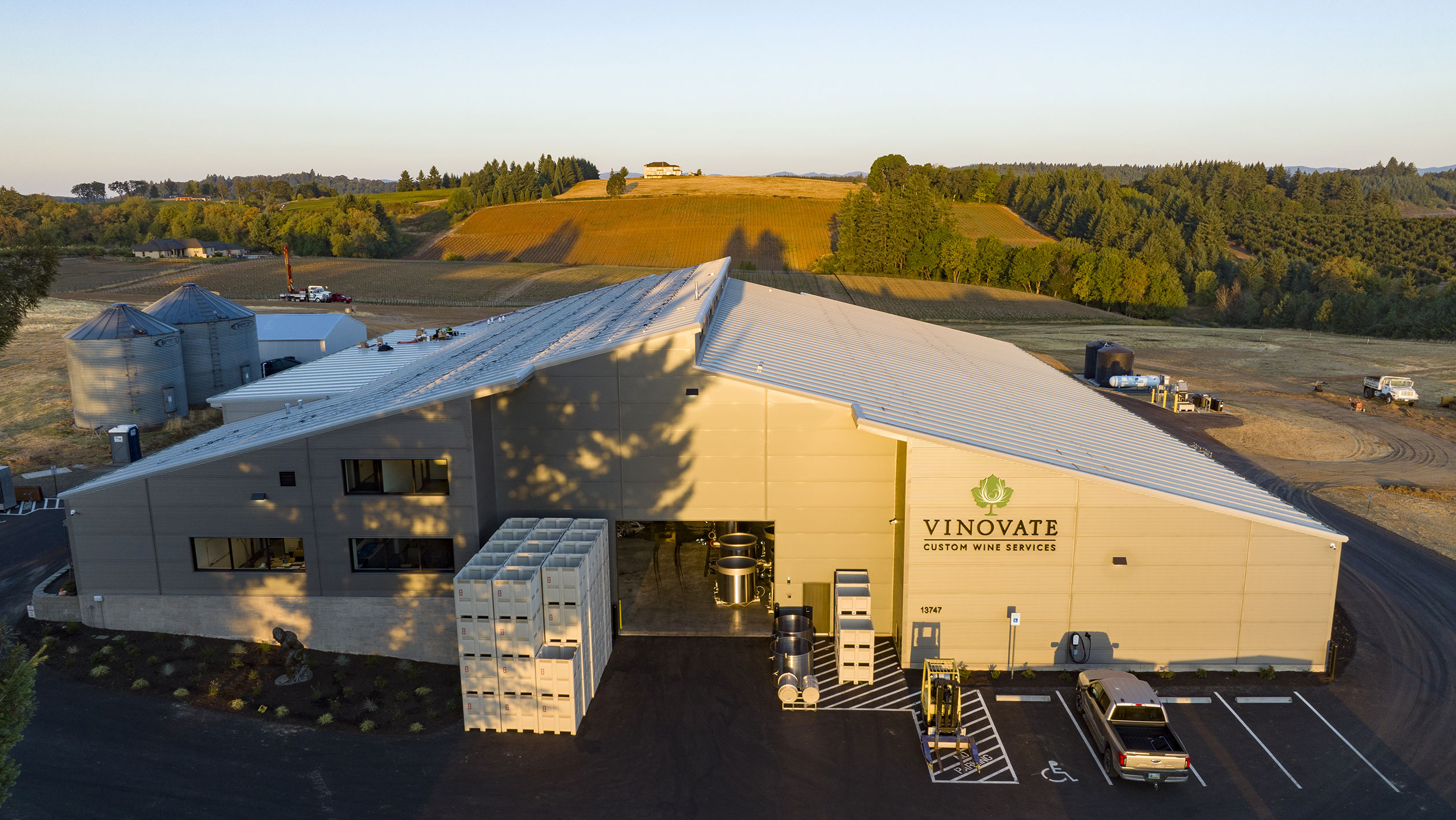With its cool climate and propensity for growing complex Pinot Noir—and increasingly, Chardonnay—Oregon’s comparison to Burgundy is understandable. But in the past decade, sparkling wine production—traditional-method sparkling, especially—has been on the rise. According to Sally Murdoch, the interim director of communications for the Oregon Wine Board, approximately 20 producers statewide made traditional-method sparkling wines in 2018. In 2021, that number rose to about 60 producers—a 200 percent increase. In truth, the number could be even higher; at the Willamette Valley Wineries Association, 94 wineries out of the 240 members self-report being sparkling wine producers.
Oregon’s developing sparkling wine industry coincides with American drinkers’ increasing thirst for fizz. According to Wine Intelligence, there was a 30 percent increase in the number of Americans drinking sparkling wine between 2019 and 2022. Given the stateside trend to consume more sparkling wine, it’s an ideal time to invest in sparkling production, and bring to market another category of Oregon wine.
Starting with the 2023 vintage, sparkling wine will be assessed as its own category in the annual report from The Institute for Policy Research and Engagement at the University of Oregon (IPRE), which previously only looked at data from individual varieties. It’s yet another indicator of the importance of sparkling wine in the state. To get a closer look at Oregon’s exploding world of sparkling wine, SevenFifty Daily spoke with several new wineries and production facilities that are diving into bubbles.

Don’t miss the latest drinks industry news and insights. Sign up for our award-winning newsletters and get insider intel, resources, and trends delivered to your inbox every week.
Why Oregon?
In addition to Oregon’s well-established success with Pinot Noir, it could be argued that the rising success of Chardonnay in the state is further contributing to the sparkling boom. According to IPRE’s 2022 Oregon Vineyard and Winery Report, Chardonnay plantings have increased by 14 percent from 2021 to 2022, and the price per ton actually surpassed that of Pinot Noir in 2022 ($2,861 versus $2,712, respectively).
“I do think [the rise of Chardonnay and the rise of sparkling wine are] very much related,” says Bryan Weil, the managing partner and winemaker of custom crush winery Vinovate Wine Services, who cultivates both Pinot Noir and Chardonnay in the Vinovate vineyard. “Chardonnay is a big player that people went pretty bullish on in terms of planting acreage.”
Though acres aren’t yet being tracked across the region, several wineries, including Corollary, Domaine Willamette, and Vinovate, have all planted Pinot Meunier—the third major grape in Champagne—for their sparkling programs. “We’re planting almost 10 percent of our vineyard in Pinot Meunier,” says Weil. “We think it adds this great complexity. As a standalone it is a really fun wine, but also in blends it can really add this great depth of flavor and texture and aromatics.”
The Start of a Movement
Although Oregon—Willamette Valley in particular—was prime for traditional-method sparkling wine production thanks to its climate and grape varieties, the finances and space needed for equipment stymied many aspiring sparkling winemakers. A decade ago, this prompted Andrew Davis to leave his job at Argyle, one of the first estates to make traditional-method sparkling wine in the state, to establish Radiant Wine Company in 2013. After clients create their base wine, Radiant helps with second fermentation, riddling, disgorging, final dosage, corking, and caging. What started with “a handful of peers,” as Davis puts it, has grown to 43 clients.

By lowering the barrier to entry, Radiant opened the door for many producers interested in making sparkling wine. Adelsheim made their first commercial sparkling wines with Radiant in the 2014 vintage—a rosé and a blanc de blancs—after experimenting on their own. “We have had an overwhelmingly positive response to our sparkling program in all of our direct-to-consumer channels,” says Adelsheim winemaker Gina Hennen. Their initial 307-case production has ballooned to approximately 1,200 cases annually.
The number of producers getting into the sparkling wine game today “shows a maturity of the industry and a confidence in the product we are making,” says Davis. “If it was just Radiant forever, that wouldn’t evolve into a mature industry around sparkling. I’m very excited to be a stepping stone and to see this sparkling in Oregon in its nascency. But moving forward, there’s got to be more players.”
New Producers and Facilities
One new kid on the block is Corollary, which calls itself a sparkling-only house. They say their all-in approach stems from the region’s potential for producing top-tier sparkling wine. Established in 2017, owners Jeanne Feldkamp and Dan Diephouse currently source from nine growers throughout Willamette Valley, working with sites that are, “high elevation, or have a lot of wind influence, or they’re a cooler microclimate, and always with sustainable farming as the baseline,” says Feldkamp. Corollary then works with Radiant on the production end. Recently, they purchased 57 acres in Eola-Amity Hills AVA and are in the process of planting the land with clones and rootstocks that lend themselves best to sparkling wine production. “That’s going to be an important part of our evolution,” says Diephouse. “How do we craft something that really speaks to the terroir of Oregon and creates amazing sparkling?”
Even well-established estates are investing heavily in their sparkling programs. Willamette Valley Vineyards (WVV) opened a dedicated facility and tasting room for Domaine Willamette, their new sparkling offshoot label, in September 2022. Fruit comes from WVV’s biodynamically farmed vineyards, and cuvées are produced with help from Radiant. Over time, they plan to purchase their own equipment and take the entire winemaking process in-house, according to Terry Culton, the director of winemaking, which will allow more flexibility and experimentation. “We do at least two years en tirage, and we’re doing extended tirage on different lots so that we can start offering five-year tirage,” says Culton. “The goal is to offer some 10-year tirage down the road.”
Oregon’s sparkling wine industry is poised to take another leap forward with the opening of Dundee’s Vinovate Wine Services in August 2023. The vision is to be a “custom crush facility for high-end, small-lot fermentations,” says Weil. The business model is such that the Vinovate team will manage the entire winemaking process, from crushing through bottling for both still and sparkling wines. But for sparkling specifically, they will also offer partial services that address needs from second fermentation to disgorgement, much like Radiant. In a few years, however, they will expand their suite of offerings: Vinovate is developing its own 40-acre vineyard, with 20 to 30 percent of the land farmed specifically for their clients’ sparkling wine production.

High Quality—and Prices
While there are some examples of pét-nats and force-carbonated wines coming out of the region, by and large the focus is on traditional-method sparkling wines. It’s not an inexpensive endeavor and the prices of the wines reflect that. But given the quality of these methode traditionelle wines, producers feel confident in pricing their sparkling on par with Champagne.
“It’s expensive to make wine in our region and the prices reflect this reality,” says Hennen. Adelsheim, Corollary, and Domaine Willamette’s cuvées retail between $50 to $75 per bottle, and Davis says some of his clients’ wines reach $100. But Hennen thinks the quality justifies the prices. “[Our price points] immediately place us in a cohort of amazing Champagnes, and we earn our place in that world only by making the highest quality wines possible,” she says.
“To be recognized as a region that is making great sparkling, we need to be able to get some of these wines out to consumers that are outside of the Willamette,” says Davis. “But Oregon Pinot was not built overnight. It took 60 years. But I’m actually surprised at how quickly some of these producers have gotten on board and have lifted their production to a point where they are going to start being sold in markets outside of Oregon, which is what needs to happen to be recognized as a quality region for sparkling. It’s very exciting nonetheless, and it takes this excitement to snowball into something bigger.”

Dispatch
Sign up for our award-winning newsletter
Don’t miss the latest drinks industry news and insights—delivered to your inbox every week.
Shana Clarke is a wine, sake, and travel writer, and the author of 150 Vineyards You Need To Visit Before You Die. Her work has appeared in Saveur, Fortune, NPR, Wine Enthusiast, and Hemispheres. She was shortlisted for the Louis Roederer 2020 International Wine Writers’ Awards and ranked one of the “Top 20 U.S. Wine Writers That Wineries Can Work With” by Beverage Trade Network in 2021. She holds a Level 3 Advanced Certificate from Wine & Spirit Education Trust and is a Certified Sake Sommelier. She will always say yes to a glass of Champagne. Learn more at www.shanaspeakswine.com and follow her @shanaspeakswine.






